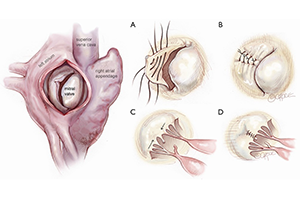How has robotic repair changed the landscape of mitral valve surgery?
Abstract
The introduction of robotic technology has revolutionized the performance of certain cardiac surgical procedures such as mitral valve (MV) repair. The foundation of modern MV repair was laid by Dr. Dwight C. McGoon in 1958. The operation was first performed with robotic assistance by Carpentier in 1998 using rudimentary motion-assisted equipment. Today, four generations later, telemanipulation technology enables surgeons to carry out all known methods of MV repair traditionally performed by conventional sternotomy; utilizing tiny port access incisions to safely and reliably eliminate mitral regurgitation. Extubation in the operating room following robotic MV repair is now routine and its benefits are well-documented, including transfer to the step-down from the intensive care unit several hours after surgery. This, in turn, translates into diminished usage of blood products, decreased need for pain medication, earlier dismissal from hospital, more rapid return to work and improved patient satisfaction. In addition, smaller, more cosmetically appealing scars and comparable short and mid-term outcomes of robotic and open MV repair have made the robotic approach a preferred option for many patients who meet appropriate safety criteria. As these procedures become more commonplace in large structural heart practices, it is important to reflect upon how the robotic approach has changed the landscape of MV surgery. We discuss the evolution and current status of robotic MV repair founded upon the principles of safe and effective open mitral valvuloplasty techniques. We will explore the potential of the robotic platform to improve both early referral and patient acceptance of interventions to eliminate severe degenerative mitral regurgitation.
Cover






